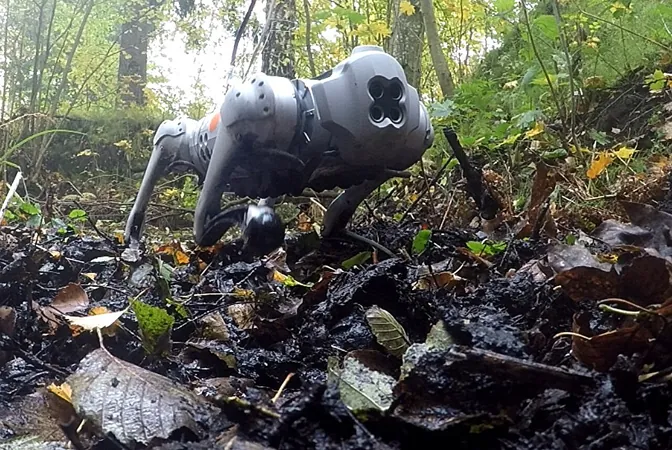
Breakthrough in Robotics: Moose-Inspired Feet Conquer Muddy Terrain!
2025-01-03
Author: Yu
Introduction
In a landmark development, roboticists at Tallinn University of Technology (TalTech) have unveiled a game-changing innovation: bio-inspired feet designed to enable robots to traverse muddy and slippery terrains with unprecedented ease. This exciting research, detailed in the journal Bioinspiration & Biomimetics, has the potential to revolutionize how robots operate in diverse and challenging environments, including wetlands, agricultural fields, and disaster zones.
The Challenge of Muddy Terrains
For decades, legged locomotion in robotics has made significant strides, with researchers striving for increased energy efficiency and adaptability. However, many types of natural terrains still present formidable challenges. "Muddy and slippery terrains are among the toughest for both robots and animals to navigate," explains Professor Maarja Kruusmaa, head of the biorobotics team. "The inability to traverse such environments limits access to vital ecosystems essential for environmental monitoring and disaster relief."
Inspiration and Design
Simon Godon, a promising doctoral candidate at TalTech, drew inspiration from his experiences on a family cattle farm in Berry, France. His insights into mechanical engineering combined with an understanding of animal locomotion led to the design of sophisticated hoof-like structures for robots, tailored to excel on muddy surfaces.
Laboratory Experiments
Laboratory experiments utilizing real moose feet demonstrated remarkable findings. The distinctive split hooves of the moose expand and contract, adapting to the sticky nature of mud as they step in and out, effectively managing contact area. "What we discovered is that the moose's hoof acts almost like a suction cup," Godon notes. "When it pulls its foot out of the mud, it breaks the suction force in a manner reminiscent of prying a fingernail underneath a suction cup."
Benefits of Innovation
This innovative design not only enhances speed and energy efficiency but also plays a critical role in preventing dire situations where robots – or animals – might get trapped or suffocated in deep mud. The researchers created silicon replicas of these moose feet for robotic applications, aiming to mimic their performance in the wild. Tests indicated that these modified robot feet significantly reduce the robot's sinkage and the associated suction force by an astonishing 50%. Furthermore, energy consumption during movement decreased by up to an impressive 70%.
Future Implications
Intriguingly, the researchers have observed no drawbacks to these modified "robo-moose" feet. "We suspect that the split hooves could also improve stability on uneven terrains," says Professor Kruusmaa. "It's clear that robots may benefit from keeping such adaptive shoes on at all times."
Conclusion
As we dive into the future of robotics, this groundbreaking advancement could also pave the way for robots to assist in critical sectors—emergency response teams may find reliable partners in these innovative machines when rapid action is needed in the wake of a natural disaster. With further refinement and implementation, our world may soon see robots confidently navigating treacherous terrains, making them invaluable allies in tackling the challenges faced by humanity.
Don’t miss out on this technological leap—the implications for environmental monitoring, agriculture, and disaster recovery are staggering! Stay tuned as we follow this exciting area of research!



 Brasil (PT)
Brasil (PT)
 Canada (EN)
Canada (EN)
 Chile (ES)
Chile (ES)
 Česko (CS)
Česko (CS)
 대한민국 (KO)
대한민국 (KO)
 España (ES)
España (ES)
 France (FR)
France (FR)
 Hong Kong (EN)
Hong Kong (EN)
 Italia (IT)
Italia (IT)
 日本 (JA)
日本 (JA)
 Magyarország (HU)
Magyarország (HU)
 Norge (NO)
Norge (NO)
 Polska (PL)
Polska (PL)
 Schweiz (DE)
Schweiz (DE)
 Singapore (EN)
Singapore (EN)
 Sverige (SV)
Sverige (SV)
 Suomi (FI)
Suomi (FI)
 Türkiye (TR)
Türkiye (TR)
 الإمارات العربية المتحدة (AR)
الإمارات العربية المتحدة (AR)